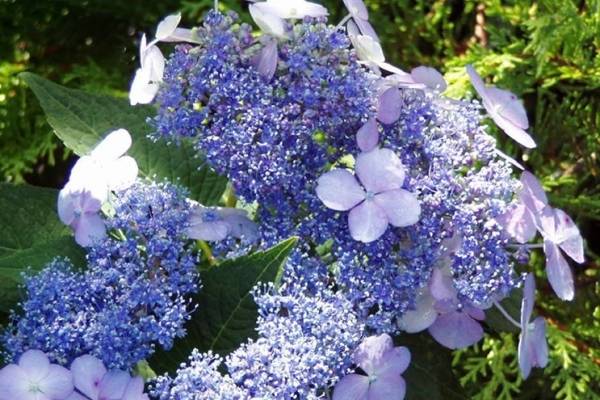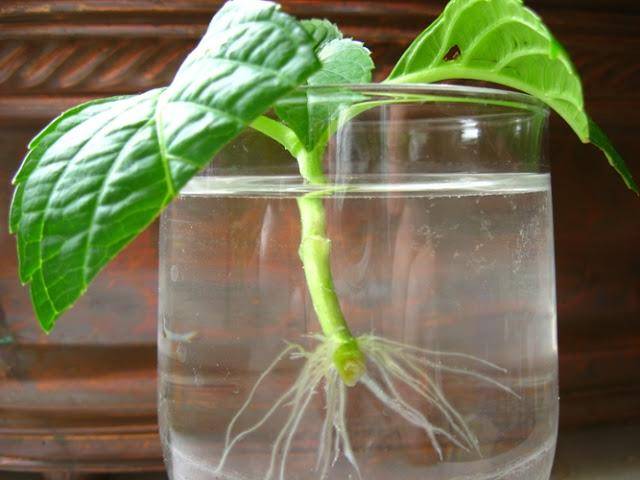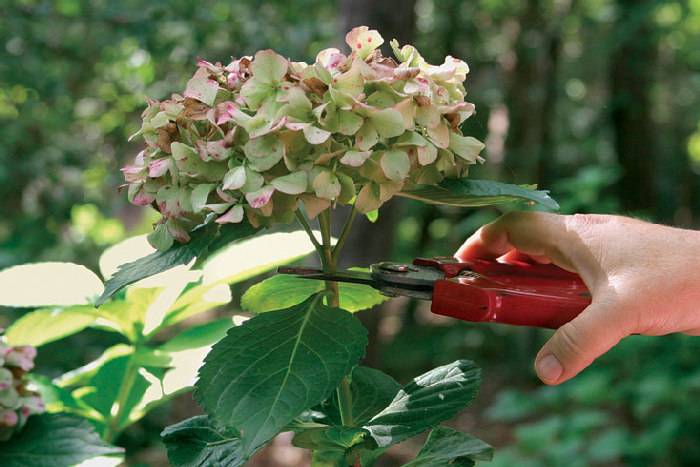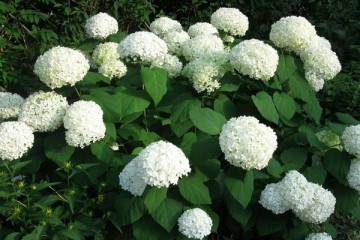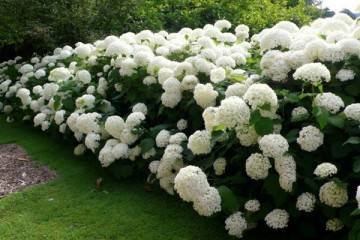Hydrangea serrata - description of the best varieties, planting and care
Content:
Hydrangea serrata is one of the varieties of large-leaved plant. This culture is native to Asia. It is characterized by beautiful flowers that can decorate any garden plot.
Description of serrated hydrangea
This crop is a sprawling plant that reaches a height of 1.5 m. Its shoots are decorated with green elliptical leaves with jagged edges. Depending on the acidity of the soil, the flowers change color from pale pink to purple.
The origin and appearance of serrated hydrangeas
Japan is considered the birthplace of culture. Initially, the flowers have only white and scarlet shades. Today, many types of shrubs are known, including hybrids. They are distinguished by their excellent appearance. The winter hardiness of the crop allows it to be grown in the Moscow region and other regions of the Russian Federation.
The plant has very beautiful inflorescences. They are flat and reach a diameter of 10 cm. The culture is characterized by a floating color of flowers. In the center, they have a pink-purple color and blue stamens. The edges are lavender or bright blue.
Species and varieties: name and characteristics
There are many varieties and varieties of plants, each of which has certain characteristics. Popular include Bluebird hydrangea, Presiosa, Koreana.
Small-sawed hydrangea Bluebird, or Blue Bird
In the description of the Blue Bird hydrangea, it is said that this plant reaches a height of 1.5 m. It is characterized by light blue flowers. This variety has excellent frost resistance. The Bluebird serrated hydrangea blooms from late July to early September. The plant is complemented by egg-shaped green foliage.
Planting and caring for Bluebird hydrangea is no different from those for other varieties of shrubs. If the hydrangea finely sawed Bluebird is grown, the description of the plant must be studied in advance.
Koreana
Hydrangea Koreana reaches a height of 1.5 m. It is characterized by elliptical leaves. Flowers can be white, pink or blue. They form decorative corymbose inflorescences.
Preciosa
It is a low-growing crop that grows to a maximum of 1.5 m in height. Hydrangea Preciosa has pink or purple inflorescences. At the beginning of flowering, they are yellow-green in color.
Transplanting serrated hydrangeas after purchase in open ground
When growing a crop, certain features must be taken into account. The plant requires a substrate of humus, leaves, peat and sand. The indentations for planting must be made in advance. Their size should be 35 cm.
To plant a culture, gardeners are advised to do the following:
- Water the hole thoroughly.
- Place a bush in it.
- Sprinkle with earth.
- Tamp the soil.
- Water the culture abundantly.
- Cover the planting with a mulch layer.
Reproduction of serrated hydrangeas
Culture propagation is carried out in different ways - by cuttings, seeds, layering, dividing the bush. In most cases, cuttings are used. For this, medium fragments of shoots are used. To speed up the process of root formation, the cuttings must be soaked in a growth stimulator.
For reproduction by layering, an adult plant is required. To do this, in the spring, you need to dig in its shoot and fix it.
Caring for serrated hydrangeas
In order for the plant to grow normally and retain its decorative properties, it needs to be provided with high-quality care. It should be comprehensive.
Features of care during flowering
During the flowering period, the crop must be weeded, watered and fed. The soil should always be moistened abundantly enough. It is especially important to do this during flowering. However, excess moisture is also contraindicated, since it provokes rotting of the root system.
In the first 2 years, the plant does not need to be fed. Then, at the stage of bud formation, superphosphate and potassium sulfate are used. During flowering, use cow dung or chicken dung.
Features of care during the rest period
After flowering, the bushes need to be cut off. In this case, you should get rid of dry flowers and excess shoots. You also need to remove old and broken branches.
Preparing for winter
Preparation of small-sawed hydrangea for wintering begins with fertilization. With the arrival of autumn, it is worth using manure. Each bush requires 20 kg of funds. Manure saturates the soil with useful substances and provides protection from the effects of low temperatures. Closer to winter, it is worth adding potassium sulfate.
Despite the high parameters of frost resistance, the hydrangea should be covered for the winter. This will help the plant come out of hibernation faster in the spring. Spruce branches or leaves are suitable as a shelter material.
Hydrangea is a popular garden crop with excellent decorative properties. To achieve success in its cultivation, it is worth taking proper care of the bushes. In this case, the shrub must be watered, fed, covered for the winter in a timely manner. Correct pruning of shoots is of no small importance.
